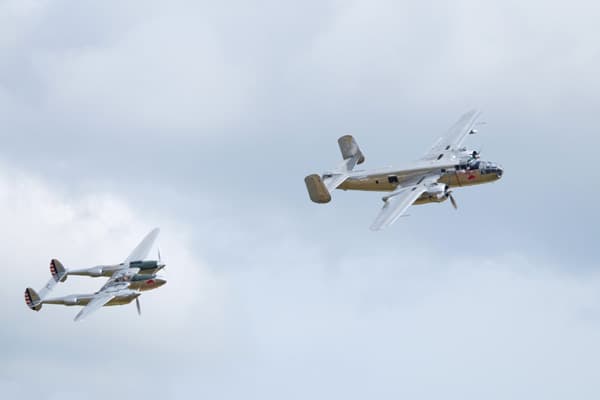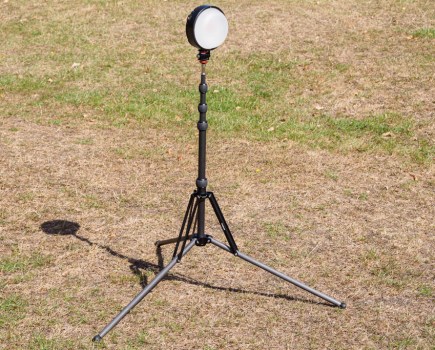Fujifilm X-T1 Firmware Version 4: Introduction
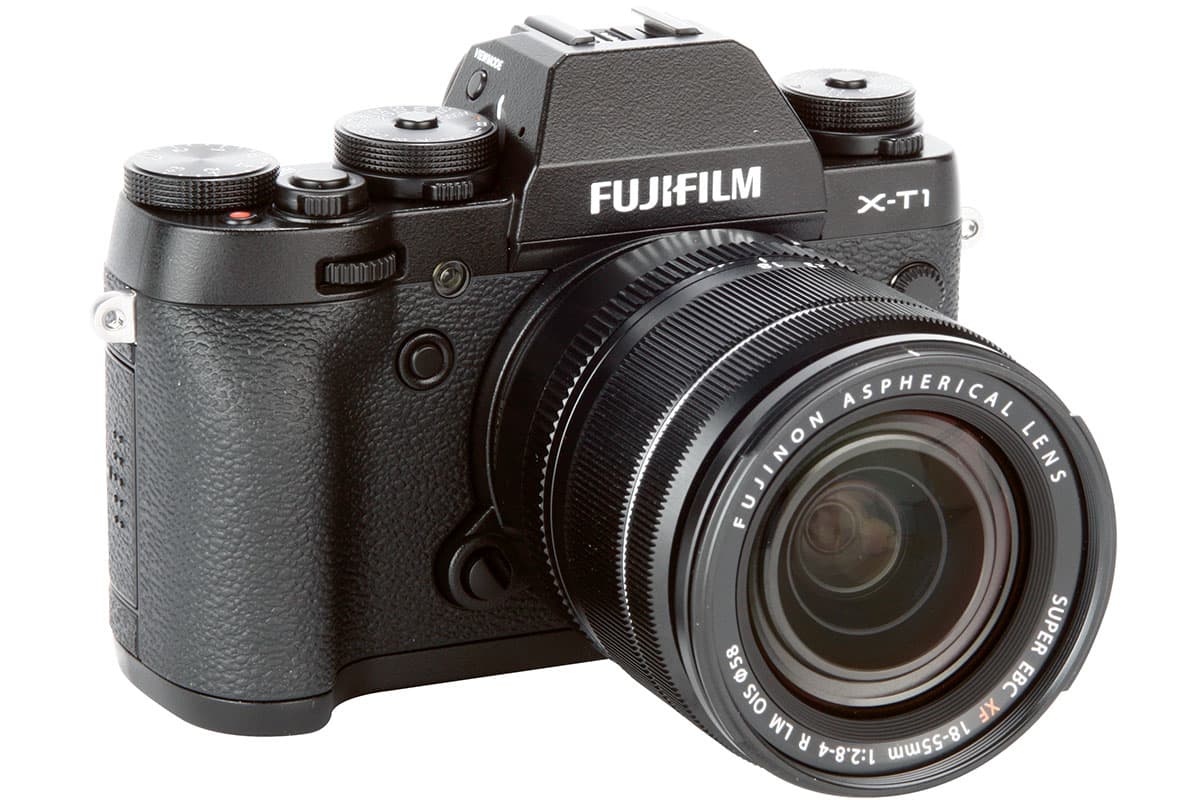
The X-T1 is Fujifilm’s premium enthusiast-oriented weatherproof compact system camera
Fujifilm X-T1 at a glance:
- 16-million-pixel, APS-C X-Trans CMOS II sensor
- ISO 200-6,400
- 8fps continuous shooting
- 2.36M dot OLED EVF
- 3in 1.04-million-dot tilting LCD
- £880 body only
Firmware Version 4.0 new features:
- Zone AF mode
- Wide Tracking AF mode
- Eye detection AF
- Auto macro mode
- Exposure compensation with
- Auto ISO in manual mode
Back in the days of film, when you bought a camera you knew exactly what features you were getting. Digital cameras, in contrast, are miniature computers that take pictures, and this means they can be upgraded via firmware updates. Historically, these were mainly used to fix operational bugs, but in recent years Fujifilm has shaken up the industry with its philosophy of ‘kaizen’, continuously improving its cameras with a slew of new features and refinements. With version 4.0 for its premium mirrorless model, the X-T1, it has completely overhauled the camera’s autofocus system, with a particular emphasis on shooting moving subjects.
As a reminder, the Fujifilm X-T1 was one of the standout cameras of last year. With a compact, rugged SLR-like design, it was roundly admired for its excellent image quality, intuitive operation and superb electronic viewfinder. Among its numerous plaudits were the Enthusiast Compact System Camera of the Year and the Reader Product of the Year at our 2015 AP awards.
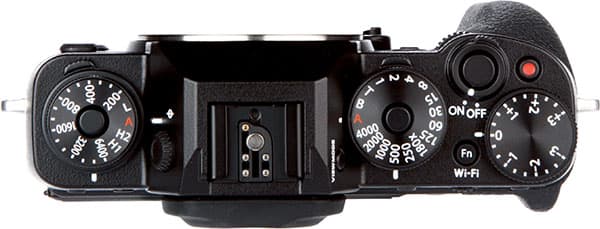
The X-T1 has top-plate dials and levers to control most major functions
As the numbering suggests, Firmware 4.0 isn’t the first update for the X-T1; in fact it’s the fifth. But it’s the second major update, after version 3.0, which brought no fewer than 27 improvements. The cumulative effect is that, on paper at least, the camera has changed significantly from when it was launched 18 months ago. So we thought it would be worth taking another look at what it can now do, compared to when we originally reviewed it back in March last year. So I took it to the Flying Legends air show at the Imperial War Museum, Duxford and put the camera through its paces.
It’s perhaps worth noting that little in version 4.0 is completely novel; we’ve seen most of its new features in other manufacturers’ cameras, in one form or another. However, Fujifilm has shown itself uniquely willing to listen to user feedback and update its cameras accordingly. So anyone who bought an X-T1 shortly after its launch will now find they have a substantially improved camera – but crucially, at no extra cost.
Fujifilm X-T1 Firmware Ver.4: Zone and Wide Tracking focus modes
The main additions in Firmware 4.0 revolve around autofocus. Two new modes have been added to help deal with moving subjects, namely Zone and Wide Tracking, both of which employ a 77-point grid of focus areas covering almost the entire frame. In Zone mode, you can specify a group of focus points – either 5×5, 5×3, or 3×3 – and position it freely within the frame. This is ideal for subjects moving predominantly towards, or away from the camera.
In Tracking mode the camera can use almost the entire area of the frame for focusing. You can set a specific point for the initial focus acquisition, but once the camera has locked on to the subject, it will attempt to follow it around the frame. In principle, this should be a better choice for more erratically moving subjects.
In practice, things are a little more complicated. The X-T1’s X-Trans CMOS II sensor has phase detection elements in the central region of the sensor allowing fast focusing, but if the subject is outside of this area, the camera has to revert to the slower contrast detection AF. This requires the sensor to be read between exposures, so is limited to working at in the slower CL shooting mode, which has a mximum shooting rate of 3fps. The upshot of this is that, if you want to shoot fast moving subjects, you’ll need to use Zone mode and the 5×3 grid of PDAF-capable focus points in the centre of the frame.
I tried out Zone mode shooting fast-moving planes, using the XC 50-230m f/4.5-6.7 telezoom, which is Fujifilm’s longest X-mount lens. I found that it worked well, keeping subjects moving quickly towards the camera in focus most of the time. The key advantage of zone mode is that it’s no longer necessary to keep a single AF point over your subject, which is tricky at the best of times. It’s worth noting that the shooting rate will often drop significantly below the maximum 9fps, as the camera needs a fraction of a second to refocus between frames. It’s also necessary to set the camera to use the mechanical shutter only (Shooting Menu 5 – Shutter Type – MS); otherwise it will shoot at full speed with focus fixed.
With Tracking mode the results are a little more equivocal. It works well when the subject is easy for the camera to identify, for example as a solid block of strong colour, and moves around the frame relatively slowly. But like similar modes on other brands, it can get laggy and confused when the subject moves too quickly, or is too small for the camera to easily distinguish from the rest of the image. It can certainly be useful, but it’s far from foolproof.
So while Firmware 4.0 brings useful and welcome advances, the X-T1 still has a way to go to catch up with the very best AF systems around when it comes to moving subjects. Notably, the phase detection area covers a relatively small part of the frame compared to DSLRs like the D7100 or Canon EOS 7D Mark II, or premium CSCs like the Samsung NX1 or Sony Alpha 6000. I also found that the system was far too keen to refocus when another object briefly came between the subject and the camera, and took a few frames to reacquire focus afterwards. Most enthusiast DSLRs are a bit more intelligent in understanding such a scentario, and holding off from refocusing.
Fujifilm X-T1 Firmware Ver.4: Eye detection focus
Fujifilm was initially reluctant to include face detection on its X series cameras, but has now thought better of it and added not just face detection, but eye detection too. The mode works for both frontal and profile portraits; when enabled it outlines faces with a large green box and displays a smaller white box over the eye that will be prioritised for correct focus. It’s fascinating to watch these boxes track your subject around the frame, and reassuring to know that the camera is (usually) doing just what you want.
Eye focus is especially useful with fast primes like the 56mm f/1.2 and 90mm f/2; you can simply let the camera get on with focusing and exposing correctly, wherever your subject is in the frame, and concentrate purely on composition and shooting. Crucially, it more or less guarantees correct focus with minimal user effort when shooting off-centre subjects at large apertures. In contrast the phase detection systems in DSLRs often give slight, but persistent focus errors under these conditions.
What else has changed in Firmware 4.0?

I used Auto ISO in manual exposure mode, with +1 EV exposure compensation to avoids underexposure against the bright sky
While autofocus is the main theme of Firmware 4.0, the X-T1 has gained a few additional improvements. Perhaps most usefully, the camera now applies any exposure compensation you may have set when shooting in manual mode with Auto ISO. This means you can manually set the shutter speed and the aperture to suit the subject, and the camera will determine the necessary ISO, taking into account whether you want lighter or darker images than normal.
This may not be something you choose to do all the time, but in some situations it’s a useful way of working. For example, at the air show I selected a shutter speed of 1/800 sec to keep my shots as sharp as possible while still showing some propeller blur, and an aperture of f/8 to get the best from the lens. I then set the exposure compensation to +1EV to compensate for the bright sky, leaving the camera to control the ISO automatically to adapt for fluctuating lighting conditions.
A couple of small operational improvements have been added, too. The full range of shutter speeds from 30sec to 1/32,000 sec can now be selected using the front electronic dial when the shutter speed dial is set to the T position. This is particularly welcome when shooting with large lenses in portrait format using the vertical grip, at which point the shutter speed dial itself is well out of reach.
There’s a new Auto Macro mode, which allows the camera to employ the full focus range of the lens, rather than having to enter a specific mode for close subjects. This essentially fixes a quirk of the Fujifilm system: macro mode is inherited from the original X-Pro1, which has to switch from the optical to the electronic viewfinder for close subjects, but it’s unnecessary on cameras like the X-T1 that only use electronic viewing. The addition of Auto Macro means that there’s one less function to assign to the camera’s programmable buttons, and means that there’s now essentially no penalty to using the d-pad to directly move the AF area around the frame.
Fujifilm X-T1: Firmware Ver.3 highlights
Handling improvements
Obviously, a mere firmware update can’t change the shape of the camera or its control layout. But it can really improve some aspects of operation, such as button customisation, onscreen displays and control logic. Here Fujifilm has made a number of small changes across various updates, and by the accumulation of marginal gains, the camera has become noticeably quicker and more pleasant to use.
A new viewfinder mode aims to give a more natural rendition of the scene, rather than reflecting the current JPEG processing settings. This prevents shadows blocking up and colours over-saturating in the live view display, so is most useful with the high contrast, high saturation Velvia mode. Personally I prefer to preview these things while shooting, but it’s good to see Fujifilm offering the choice.
It’s also now possible to preview exposure and white balance settings in manual exposure mode. An expanded range of options can be assigned to the various programmable buttons, and a particularly nice touch is the option to customise the onscreen Q Menu with the settings you change most often. I particularly appreciate the ability to move the AF area around the frame directly using the d-pad on the back of the camera, without having to press a function button first.
It’s not just the firmware that has been updated, either. At the X-T1’s launch, one of the major gripes raised by reviewers was the recessed, spongey-feeling d-pad on the camera’s back. Since then, Fujifilm has quietly redesigned these buttons to protrude a little further and click more positively. Sadly though, there’s nothing a firmware update can do to make the always-locked ISO dial more accessible and quicker to change. If this annoys you on the X-T1 as it does me, then the X-T10 is worth a look.
Silent Electronic Shutter
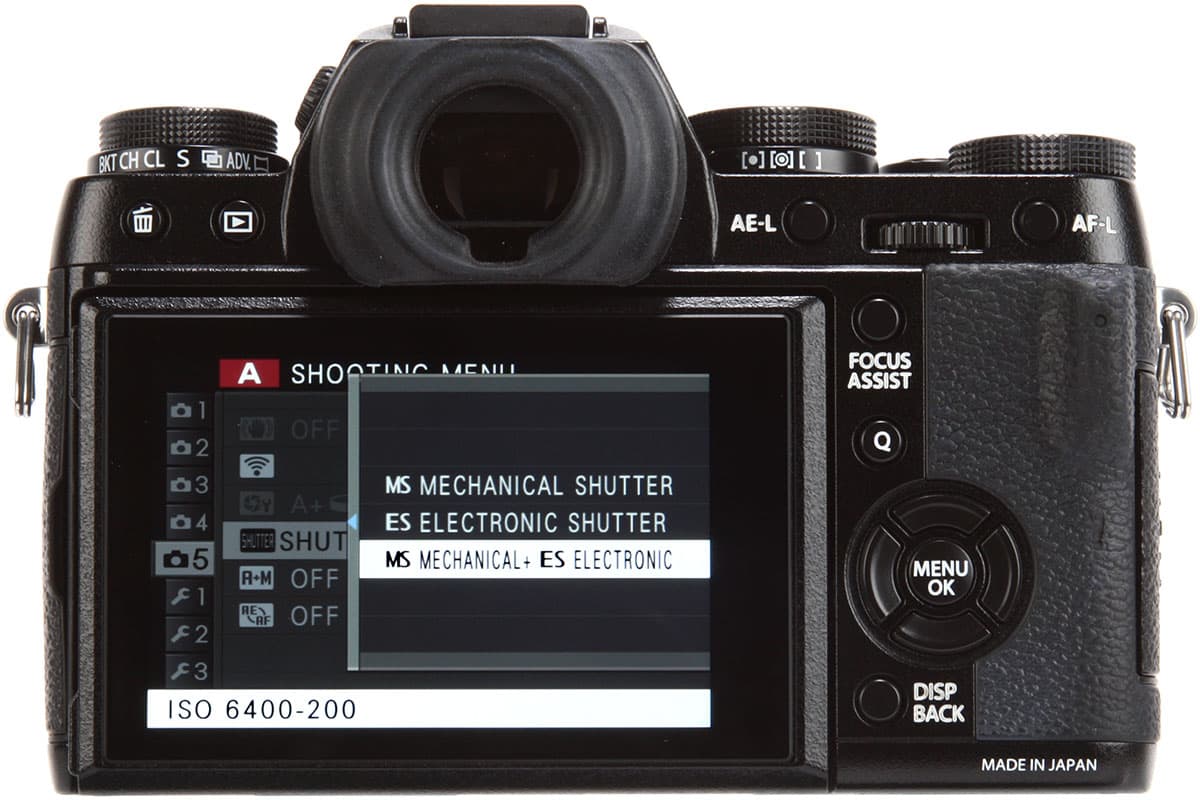
The X-T1’s silent electronic shutter can be enabled in the menu
As the headline addition in Firmware Ver.3, Fujifilm introduced a fully electronic shutter option that brings two key benefits. First, it’s completely silent, which is great for shooting in situations where the sound of the physical shutter would be intrusive. Secondly, it allows the use of exceptionally fast shutter speeds up to 1/32,000 sec, which allows shooting with ultra-fast primes such as the XF 56mm f/1.2R wide open in bright light (normally you’d need a neutral density filter to avoid over-exposure). The user can select between mechanical or electronic shutter in the menu, or allow the camera to choose between the two automatically in MS+ES mode.
Silent mode has a couple of drawbacks, though. It’s prone to rolling shutter artefacts, giving distortion of moving subjects, and fast-flickering fluorescent lights can produce horizontal banding that is near impossible to correct. It also comes with some odd incompatibilities – it disables the use of extended ISO sensitivities and prevents refocusing between frames during continuous shooting. As these apply even when the camera is using the mechanical shutter mode in MS+ES mode, it’s best to turn on the electronic shutter only when needed. Luckily the mechanical shutter is pretty quiet anyway.
Fujifilm X-T1 Firmware Ver.4: Conclusion
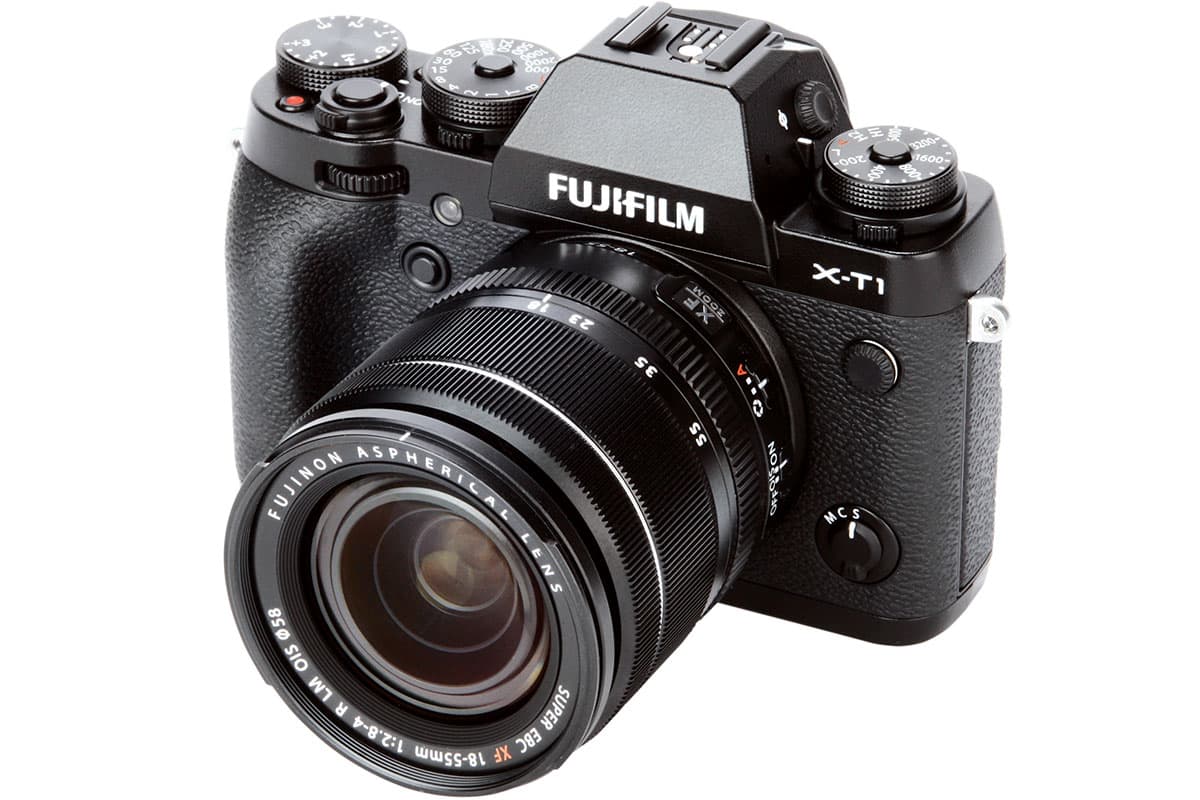
With Firmware Version 4.0, Fujifilm has taken the excellent X-T1 and made it even better
All the hype surrounding Fujifilm’s Firmware 4.0 update for the X-T1 has been to do with its overhauled focus system, and in practice it brings some useful updates that make the camera an even stronger contender in its class. Zone mode is very effective, particularly when using the central phase detection region of the frame, and Wide Tracking can work well with cooperative subjects. But while this counts as a solid advance for Fujifilm, the wider phase detection areas of competitors such as the Sony Alpha 6000 and Samsung NX1 means these cameras still have the overall edge.
However, it’s equally important not to overlook all of the other useful improvements Fujifilm has made to the X-T1 over the past 18 months. Notably, Firmware 3.0 added a silent electronic shutter with speeds up to 1/32,000 sec, along with an array of handling improvements including additional control customisation and a user-configurable Q menu. The net effect has been to take a camera that was very impressive to start with, and improve it substantially.
No other manufacturer has shown quite the same commitment to supporting its cameras, and Fujifilm has to be praised for this. Of course it’s a not purely altruistic – it builds up goodwill and a positive brand image, encouraging photographers to buy into the system. A couple of companies have started to follow Fujifilm’s lead, most notably Samsung with major firmware updates for the NX1, and hopefully we’ll see more of this in future. It can only be good for photographers.




